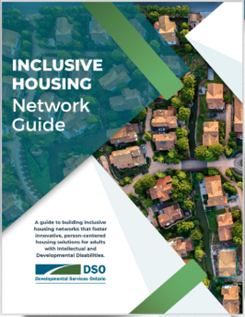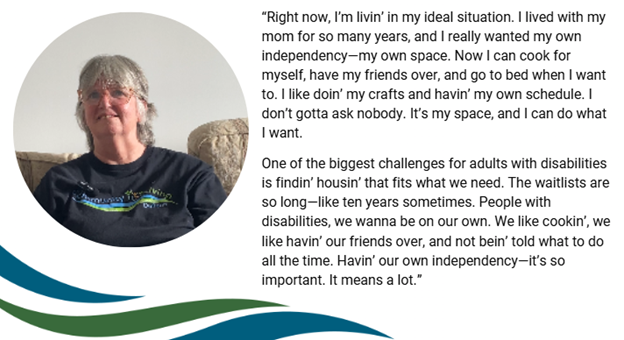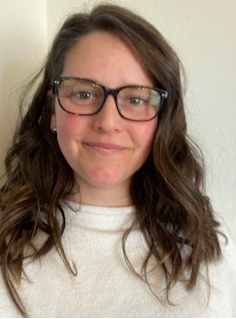 In May 2025, I had the privilege of co-presenting at OMSSA’s 2025 Exchange Conference on Collaborative Housing Solutions for People with Intellectual and Developmental Disabilities (IDD). The urgency of the conversation was clear: people with IDD continue to face critical barriers to safe, affordable, and accessible housing.
In May 2025, I had the privilege of co-presenting at OMSSA’s 2025 Exchange Conference on Collaborative Housing Solutions for People with Intellectual and Developmental Disabilities (IDD). The urgency of the conversation was clear: people with IDD continue to face critical barriers to safe, affordable, and accessible housing.
The presentation spotlighted the new Inclusive Housing Network Guide, a resource created by Developmental Services Ontario (DSO) Housing Navigators to support communities, policymakers, and providers in building person-centered housing solutions rooted in equity and choice. This blog continues that conversation by revisiting key ideas from the session and inviting OMSSA Members to lead the next wave of change.
Understanding the Challenge
Adults with mild to moderate IDD are still disproportionately:
- Living with aging caregivers
- Placed in inappropriate settings like hospitals or long-term care
- Cycling through shelters or experiencing homelessness
Meanwhile, ODSP rates have not kept pace with market rents. As affordability erodes, inclusive housing becomes not only a social issue but a system-wide crisis.
What Do We Mean by Inclusive Housing?
Inclusive housing is about more than accessibility. It’s about choice, affordability, and community integration. It means:
- Living independently or with chosen roommates
- Having a say in where, how, and with whom one lives
- Being connected to jobs, friends, public services, and supports
The Inclusive Housing Network Guide defines inclusive housing as a model that prioritizes self-determination, promotes community belonging, and is adaptable to diverse cultural, economic, and social needs.

Real-World Models: What’s Already Working
Several communities across Ontario are already demonstrating what’s possible through strong cross-sector collaboration.
In Kenora, the partnership between the Kenora Association for Community Living (KACL) and the Kenora District Services Board (KDSB) has resulted in the development of 21 supportive housing units in 2020 and, more recently, an additional 6 units for individuals with IDD. This collaboration is a leading example of how developmental service agencies, Service Managers, and funders can work together to align housing and support services while leveraging provincial and federal resources to ensure both affordability and long-term sustainability.
In Sudbury, the Housing Strategy Working Group brings together local leaders from housing, social services, developmental services, and community-based organizations. Their shared leadership model promotes system navigation and community alignment, helping adults with IDD access inclusive housing that meets their needs.
In Peel, the Uniti Building is a purpose-built, inclusive housing development that reflects a deep commitment to integration and accessibility.
Waterloo Region also offers a strong model, where developmental service agencies work alongside municipal housing teams to streamline access and remove barriers. Notably, their collaboration with DSO has enabled direct Canada-Ontario Housing Benefit (COHB) allocations to individuals with IDD, ensuring greater flexibility and housing choice.
These examples highlight how intentional partnerships and policy alignment can create lasting, inclusive housing solutions.


Tools for Action: The Inclusive Housing Network Guide
The Inclusive Housing Network Guide is more than a concept—it’s a toolkit. It offers:
- Frameworks and planning tools
- Stakeholder engagement strategies
- Policy levers and funding resources
Why Inclusive Housing Matters for Everyone
When inclusive housing is in place, we see:
- Reduced use of emergency services
- Economic benefits
- Stronger communities
In short, inclusive housing strengthens systems and transforms lives.
What OMSSA Members Can Do
As professionals working at the intersection of housing, social services, and municipal leadership, OMSSA members can:
- Embed inclusion into local housing strategies
- Advocate for inclusionary zoning and accessible design
- Bridge funding gaps
- Center the voices of people with lived experience
A Vision Forward
Inclusive housing is not a luxury—it’s a right. The Inclusive Housing Network Guide reminds us that sustainable, community-integrated housing is not only possible, it’s already happening.
Let’s ensure that people with intellectual and developmental disabilities are not just housed—but included, respected, and thriving in the communities they call home.
Want to Learn More?
Download the Inclusive Housing Network Guide: IHNG
Contact your local DSO Housing Navigator: DSO HN Contact List


